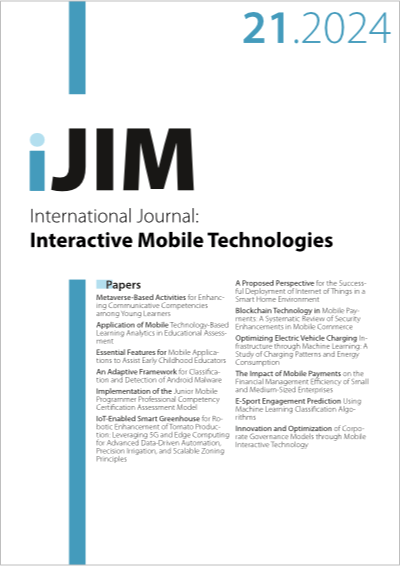An Adaptive Framework for Classification and Detection of Android Malware
DOI:
https://doi.org/10.3991/ijim.v18i21.49669Keywords:
Android Operating System, Machine Learning, Malware, Adware, Banking, SMS Malware, Riskware, CICMaldroid2020, Malware DetectionAbstract
The hardware and software of a computer are controlled by its operating system (OS), which performs essential tasks such as input and output processing, file and memory management, and the management of peripheral devices such as disk drives and printers. Application software refers to programs designed for specific purposes, these applications, often freely available and open source, contribute to the rising number of downloads. In the third quarter of 2022, combined downloads from the Apple App Store and Google Play Reached an estimated 35.3 billion. However, the prevalence of insecurity in these applications and technologies heightens the potential for cybercrimes. Protection against unauthorized intruders is crucial in identifying malicious applications. Machine learning (ML) serves as a promising avenue for detecting malware attacks, offering potential solutions to bolster cybersecurity measures. We propose a novel approach utilizing ML to enhance malware detection accuracy by segmenting datasets into distinct groups. Our research employs supervised ML techniques on the CICMaldroid2020 dataset, which includes comprehensive information such as intent actions, permissions, and sensitive APIs. The dataset was partitioned into four groups, each containing 150 features, and analyzed across four experiments to distinguish between attack and benign classes. Our proposed model demonstrated exceptional performance, with the random forest algorithm achieving an accuracy of 98.6% and a precision of 98.75%. These results highlight the effectiveness of our segmentation approach and its significant contribution to advancing malware detection in Android applications, offering a promising direction for future cybersecurity solutions.
Downloads
Published
How to Cite
Issue
Section
License
Copyright (c) 2024 Ashraf al Sharah, Yousef Abu Alrub, Hamza Abu Owida, esraa abuelsoud, Nawaf Alshdaifat, Hamzah Khtatnaha

This work is licensed under a Creative Commons Attribution 4.0 International License.



